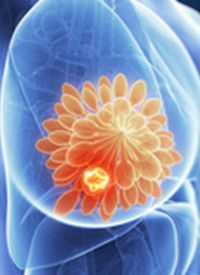Article
Neoadjuvant Pertuzumab/Trastuzumab Increases pCR Rate, Is Cost Neutral in HER2+ Breast Cancer in Real-World Setting
Author(s):
Neoadjuvant chemotherapy with dual HER2-blockade of pertuzumab and trastuzumab is well tolerated and increases the rate of pathological complete response in patients with HER2-positive breast cancer compared with regimens that contain trastuzumab only, while being neutral on drug cost.

Neoadjuvant chemotherapy with dual HER2-blockade of pertuzumab (Perjeta) and trastuzumab (Herceptin) is well tolerated and increases the rate of pathological complete response (pCR) in patients with HER2-positive breast cancer compared with regimens that contain trastuzumab only, while being neutral on drug cost, according to results of a single-center, real-world analysis from Canada.
In analyzing data from 83 patients who received anti-HER2 therapy in the neoadjuvant setting at Jewish General Hospital between 2015 and 2021 , the addition of pertuzumab to trastuzumab resulted in a pCR rate at surgery of 62% compared with 27.3% in those treated with trastuzumab alone (P = .0016), reported Francois Panet, MD, MSc, at the 2022 San Antonio Breast Cancer Symposium.
For patients with nonmetastatic T2 or node-positive HER2-positive breast cancer, neoadjuvant treatment can allow for less invasive surgery and can select higher-risk patients who fail to achieve a pCR. Standard of care in patients who do not achieve pCR is 14 cycles of adjuvant ado-trastuzumab emtansine (T-DM1), but this treatment comes with significant cost and more adverse effects (AEs) than trastuzumab alone.
The National Comprehensive Cancer Network guidelines have endorsed the use of trastuzumab and pertuzumab combined with chemotherapy in the neoadjuvant setting. Pertuzumab, however, is often not reimbursed depending on the health system.
Patients who don’t achieve a pCR at surgery are eligible for adjuvant T-DM1, which adds toxicities as well as cost to the healthcare system.
“At Jewish General Hospital, pertuzumab was routinely added to standard neoadjuvant therapy after 2019, and this allowed us to compare patients treated before they started using pertuzumab and after,” Panet, a medical oncology fellow at McGill University, Mont-Royal in Quebec, Canada, said.
Thirty-nine patients with localized HER2-positive breast cancer received treatment with dual HER2 blockade and 44 with trastuzumab alone. Tumor stage was T1 or T2 in 68% of the group who received dual HER2 blockade and 73% in those who received trastuzumab alone. Half of patients in the pertuzumab/trastuzumab group were hormone receptor (HR) positive, vs 66% in the trastuzumab-alone group.
The most common type of neoadjuvant chemotherapy in both time periods was 8 to 12 weeks of anthracycline followed by taxane therapy, 62% in those receiving dual HER2 blockade and 75% in those treated with trastuzumab alone.
“We saw a big increase in pCR, more so in the hormone receptor–negative [group] than in the hormone receptor–positive patients,” he said, although the increase in pCR rate was observed in both subgroups. In the HR-negative group, the pCR rate was 40% with trastuzumab alone vs 84% with the use of both trastuzumab and pertuzumab (P = .0098). In the HR-positive patients, the pCR rates were 21% with trastuzumab alone and 40% with dual HER2 blockade (P = .13).
A nonstatistically significant reduction in the requirement for axillary dissection was observed with the use of pertuzumab plus trastuzumab compared with trastuzumab alone (28% vs. 39%; P = .2208).
“We did a cost analysis because those who have residual disease go on to receive 14 cycles of adjuvant T-DM1,” Panet said. “The increase in the pCR rate with pertuzumab reduced the number of patients eligible for adjuvant T-DM1, resulting in cost neutrality.”
If all patients with residual disease had received adjuvant T-DM1, the estimated mean anti-HER2 drug cost would be 65,150 CA$ in the pertuzumab/trastuzumab group and 66,116 CA$ in the trastuzumab-alone group.
Importantly, use of pertuzumab in this setting enables a subset of patients to forego the toxicities associated with T-DM1, he said.
Reference
Panet F, Young M, Wong SM et al. Real-world outcome and cost analysis of the addition of pertuzumab to neoadjuvant therapy in localized HER2 positive breast cancer: a single center experience. Presented at: 2022 San Antonio Breast Cancer Symposium; December 6-10, 2022; San Antonio, TX. Abstract P2-01-06.





%20u.jpg?fit=crop&auto=format)

